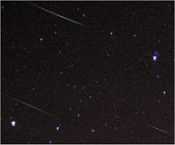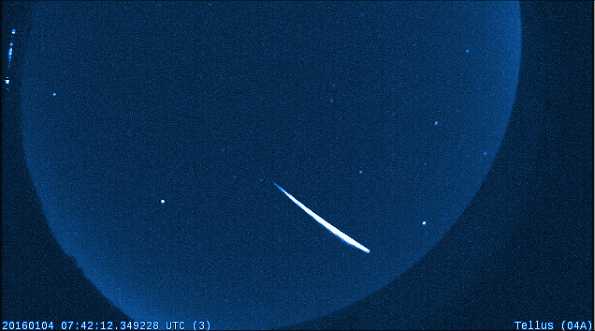|
The Feel-Good Guide to Sports, Travel, Shopping & Entertainment
|
||
| Main | Sports Events | Holidays & Observances | Pop Culture | Shopping | Travel |
|
MAIN
The first major meteor showers of the year, the Quadrantids (pronounced "kwa-DRAN-tids") are also one of the most intense -- and more challenging to view! This is mainly due to the time of year when they occur on a dark night in coldest January. That, along with their reputation for giving "one night only" appearances. But those that stay up to see them are rewarded with a brilliant light show. Because Quadrantids are made up of larger particles than other major meteor showers, they produce a clutch of vivid "fireballs" that are exhilarating to watch. It's no surprise, then, that dedicated amateur astronomers plan to be out in the dark of winter to view them. But those who do become witnesses to a spectacular show of up to 50-100 meteors per hour at their peak. 2024 UPDATE: This year's conditions for viewing Quadrantid will be less than ideal as a bright half moon will cause interference through the night of January 3-4, 2024..
While other meteor showers throughout the year are "long tail" events (with sightings over days or weeks), the Quadrantids are mostly viewed only at their peak. This year's Quadrantids meteor shower will begin in the late night hours of January 3rd but will reach its peak around midnight. Extreme northern US states and Canada, Asia, along with locations in northern Europe usually have the best viewing of Quadrantids. To locate them look up in the north or northwestern sky in the constellation Bootes just below the Big Dipper and just above the constellation Draco.
The January meteor shower got its name from the now-defunct constellation Quadrant Murales, the location of their radiant when they were first discovered in 1835. But in a scientific reassignment of constellations in 1922, Quadrant Murales wasn't included. Reassigned to the constellation Bootes, the Quadrantids only kept their original name because another meteor shower was already known as the Bootids, which occur in June. For almost two centuries, the actual origin of the Quadrantids remained a mystery until 2003 when NASA discovered that they were the fine dust particles left behind by an extinct comet now known as 2003 EHI.
How to view Quadrantids The best place to observe the Quadrantids meteor shower (or any meteor shower for that matter), is somewhere dark, away from light pollution, and with the moon out of the field of vision. The less light visible, the more brilliant the meteor shower will be.
While mostly viewable to the naked eye, the annual Quadrantids meteor shower may be in any year partially obstructed by the moon, clouds or January winter storms, so amateur astronomers might want to carry along a pair of binoculars just in case. Even on clear nights, some type of viewing aid may come in handy for catching sight of even the faintest of falling stars, aptly named "telescopic" meteors. On super clear nights, forget the telescope and simply look up. For photographing the annual event, a digital camera mounted on a tripod helps to steady the images that swiftly move across the sky. A quick trigger finger also helps, but even random clicks during the height of Quadrantids "prime-time" will also guarantee that you'll catch something! Be sure to have the camera focused on infinity and, if your camera permits, leave the shutter open for several minutes for the most spectacular photographic effects. also see in Travel --> Viewing Iceland's Northern Lights More about Quadrantids meteor shower around the Web:
Quadrantids In Depth -
Extensive background facts and historical information on Quadrantids from NASA.
|


